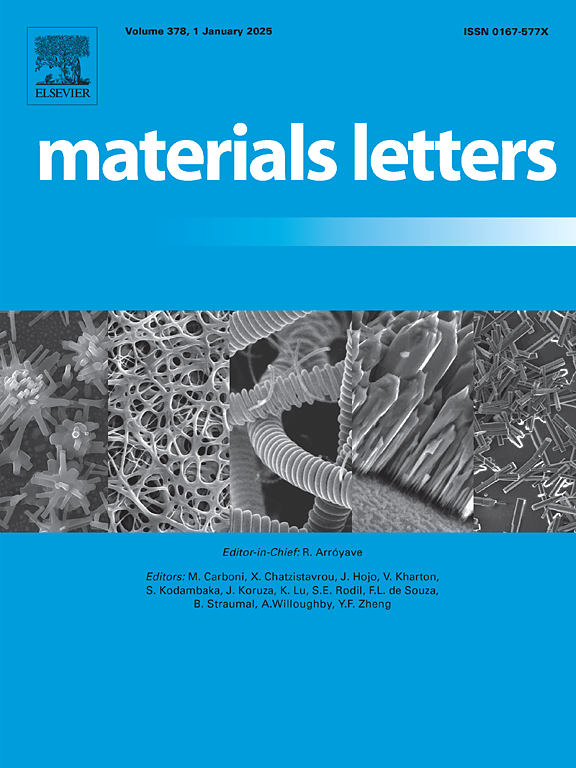粗相是金属中位错产生的来源
IF 2.7
4区 材料科学
Q3 MATERIALS SCIENCE, MULTIDISCIPLINARY
引用次数: 0
摘要
沉淀强化机制促进了许多合金的发展。它的有效性与高数量密度的细颗粒均匀分布在合金基体中的强位错钉住有关。然而,粗沉淀物的作用不仅被低估,而且经常被认为是有害的。在本工作中,我们发现了粗颗粒与初级相界面上位错的产生机制。源自粗粒(>100 nm)颗粒的位错密度增加对细粒(<10 nm)颗粒相关的析出强化水平有显著影响。本文章由计算机程序翻译,如有差异,请以英文原文为准。

Coarse precipitates are dislocation generation sources in metal
Precipitation strengthening mechanism contributed to development of numerous alloys. Its effectiveness is associated with strong dislocation pinning by fine particles of high number density homogeneously dispersed through the alloy matrix. However, the role of coarse precipitates is not only underestimated but frequently considered as detrimental. In this work we discover the dislocation generation mechanism on the interface between the coarse particles and the primary phase. An increased dislocation density originating from the course (>100 nm) particles has a significant impact on the level of precipitation strengthening associated with the fine (<10 nm) particles.
求助全文
通过发布文献求助,成功后即可免费获取论文全文。
去求助
来源期刊

Materials Letters
工程技术-材料科学:综合
CiteScore
5.60
自引率
3.30%
发文量
1948
审稿时长
50 days
期刊介绍:
Materials Letters has an open access mirror journal Materials Letters: X, sharing the same aims and scope, editorial team, submission system and rigorous peer review.
Materials Letters is dedicated to publishing novel, cutting edge reports of broad interest to the materials community. The journal provides a forum for materials scientists and engineers, physicists, and chemists to rapidly communicate on the most important topics in the field of materials.
Contributions include, but are not limited to, a variety of topics such as:
• Materials - Metals and alloys, amorphous solids, ceramics, composites, polymers, semiconductors
• Applications - Structural, opto-electronic, magnetic, medical, MEMS, sensors, smart
• Characterization - Analytical, microscopy, scanning probes, nanoscopic, optical, electrical, magnetic, acoustic, spectroscopic, diffraction
• Novel Materials - Micro and nanostructures (nanowires, nanotubes, nanoparticles), nanocomposites, thin films, superlattices, quantum dots.
• Processing - Crystal growth, thin film processing, sol-gel processing, mechanical processing, assembly, nanocrystalline processing.
• Properties - Mechanical, magnetic, optical, electrical, ferroelectric, thermal, interfacial, transport, thermodynamic
• Synthesis - Quenching, solid state, solidification, solution synthesis, vapor deposition, high pressure, explosive
 求助内容:
求助内容: 应助结果提醒方式:
应助结果提醒方式:


